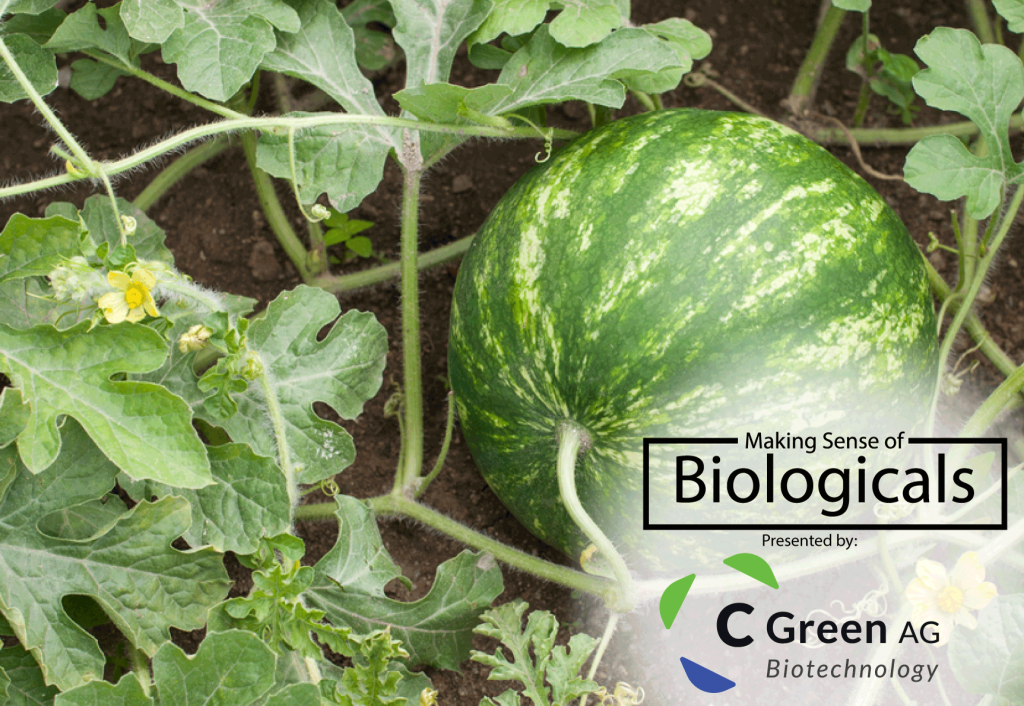
Sometimes vegetable and specialty crop growers must think outside the box to remain sustainable amid high input costs and devastating diseases.
What if seaweed could be used to aid in the quality of strawberries, bell peppers or tomatoes? Seaweed is a biostimulant that is part of the biological crop protection products that vegetable and specialty crop producers are increasingly using this year.
Biostimulants like seaweed are valuable components of agricultural production. If used in concert with regular chemical applications that growers are already utilizing, biostimulants can provide additional protection against unwanted pests, diseases and weeds that impact plants. Growers know they are going to encounter these challenges every year, and Florida’s environment is already conducive to these obstacles occurring. Adding another layer of protection with biostimulants can bring your crop to the next level.
Proven Positive Effects
“Numerous studies have revealed a wide range of beneficial effects of seaweed extract applications on plants, such as early seed germination and establishment, improved crop performance and yield, elevated resistance to biotic and abiotic stress, and enhanced postharvest shelf-life of perishable products,” states the research paper. “Seaweed components such as macro and micro-elements nutrients, amino acids, vitamins, cytokinonines, auxins and Abscissic acid (AB-A)-like growth substance affect cellular metabolism in treated plants leading to enhanced growth and crop yield.”
Seaweed extracts’ biochemical composition consists of different minerals, vitamins, oils, fats, acids, antioxidants and hormones. While the makeup is extremely complex, it has led to success for growers in agricultural uses for centuries.
According to the research paper titled “Trends in Seaweed Extract Based Biostimulants: Manufacturing Process and Beneficial Effect on Soil-Plant Systems” (EL Boukhari MEM, Barakate M., Bouhia Y., Lyamlouli K., 2020) published in Plants scientific journal, the use of seaweeds in agriculture dates back thousands of years ago.
“During the ancient Roman times, plant seedlings were covered with algae to promote their growth,” states the Plants paper. “In the coastal area of Europe, farmers incorporated seaweeds in the soil or used it as a compost. Starting from 1948, 18 countries had developed their seaweed resources for fertilizers.”
The Plants paper explains that plant biostimulants, are “any substance or microorganism applied to plants with the aim to enhance nutrition efficiency, abiotic stress tolerance and/or crop quality traits, regardless of its nutrients content.”
Seaweed extracts comprise a major portion of the biostimulant market around the world, resulting in its high value. “Seaweed extracts constitute more than 33% of the total biostimulant market and are predicted to reach a value of $894 million euro in 2022,” states the Plants research.
Biostimulant Boosts Production
C Green has identified specific active compounds capable of generating more solid and safer cell differentiation and division. Once the fertilization process occurs, differentiation and division of cells occurs. The goal of any grower is for their crop to achieve its maximum genetic potential, thus producing the highest possible yield. The better the cells are differentiated, the better the cells will be divided. This will help the grower to obtain more marketable fruit, including not only higher yields, but also improved size and more uniformity.
The compounds that actively contribute to assure these crucial metabolic functions are phytohormones (including auxins, gibberellins, cytokinins, brassinosteroids and polyamines) and/or specific carbohydrates such as beta glucan, more commonly called laminarin.
These compounds are contained in the VEGRO® biostimulant product. The purpose of this product is to help growers enhance the quality of their production by producing a healthier crop with natural active compounds capable of improving the efficacy of fungicides and/or bactericides. In addition, VEGRO® can be used to produce healthier crops when vegetables are faced with pressure from diseases such as bacterial spot, anthracnose, botrytis and powdery mildew.
Hungry for Disease Help
VEGRO® has proven to aid in the efficacy of fungicides against those diseases while also enhancing the quality yields of those commodities.
If growers understand that their crop will face high disease pressure every year, they are more likely to apply additional chemical inputs as part of their management program.
However, as more fungicides and pesticides are applied, this makes resistance more likely to develop. Resistance occurs when a disease or pest becomes immune to a chemical application because it has been overused. That is why growers are currently encouraged to rotate chemistries so that resistance is less likely to happen.
To learn more about C Green Ag Biotechnology’s VEGRO®, see the U.S. agronomic data available here. Growers will discover more at the website on how they can reduce the negative impacts of diseases that affect their production.
Sponsored Content









